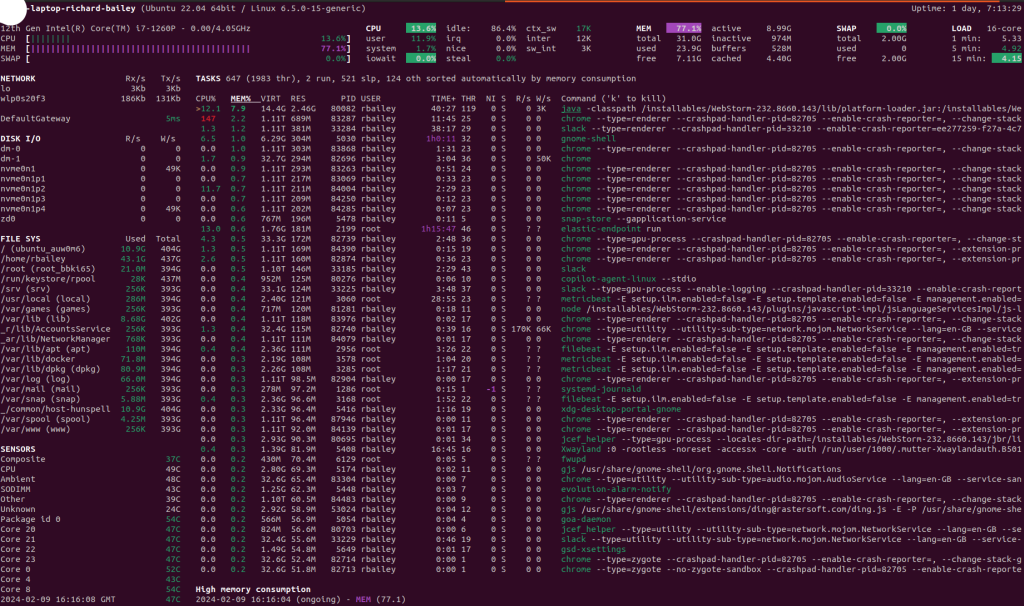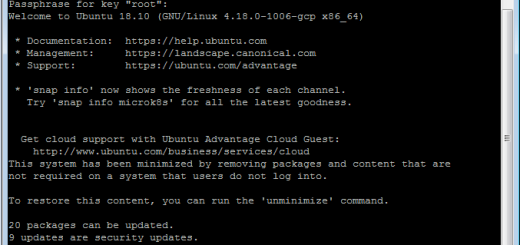How to Install and Use Glances on RHEL 9/8, Rocky Linux, & CentOS Stream
Glances is a powerful, cross-platform system monitoring tool written in Python that gives you a comprehensive, real-time view of your server’s resources. It packs a massive amount of information—from CPU and memory usage to disk I/O, running processes, and network traffic—into a single, easy-to-read console or web-based interface.
This guide provides clear, updated instructions for installing Glances on modern Red Hat Enterprise Linux (RHEL) systems (versions 9 and 8) and their compatible distributions, such as Rocky Linux, AlmaLinux, and CentOS Stream.

Why Use Glances?
Before diving into the installation, let’s consider why Glances is a favorite among system administrators:
- All-in-One Dashboard: See all critical metrics in one place, eliminating the need to run multiple commands like
top,htop,iostat, andnethogs. - Color-Coded Alerts: Glances uses colors to highlight potential issues, making it easy to spot system bottlenecks at a glance.
- Remote Monitoring: Use the built-in web UI to monitor servers remotely from any browser.
- Extensible: Glances can be extended with plugins to monitor Docker containers, specific applications, and more.
Method 1: Installing Glances with DNF (Recommended)
The most reliable and straightforward method for installing Glances is by using the Extra Packages for Enterprise Linux (EPEL) repository. This ensures you get a stable version that is well-integrated with your operating system.
Step 1: Enable the EPEL Repository
If you haven’t already enabled it, the EPEL repository gives you access to a large collection of high-quality open-source packages.
On RHEL 9, Rocky Linux 9, AlmaLinux 9:
sudo dnf install https://dl.fedoraproject.org/pub/epel/epel-release-latest-9.noarch.rpm -yOn RHEL 8, Rocky Linux 8, AlmaLinux 8:
sudo dnf install https://dl.fedoraproject.org/pub/epel/epel-release-latest-8.noarch.rpm -yStep 2: Install Glances
With EPEL enabled, you can now install Glances with a single command. The dnf package manager will handle all necessary dependencies automatically.
sudo dnf install glances -yMethod 2: Installing Glances with Pip
If you need the absolute latest version of Glances or prefer to manage it as a Python package, you can use pip.
Step 1: Install Python and Pip
First, ensure you have Python and the pip package installer available.
sudo dnf install python3 python3-pip -yStep 2: Install Glances using Pip
Now, install Glances. It’s also recommended to install the bottle package, which is required for the web interface.
sudo pip3 install glances bottleStarting and Using Glances
Once installed, using Glances is simple.
Local Monitoring
To monitor the server you are currently logged into, just run the command:
glancesPress q or Esc to exit.
Remote Monitoring (Web Interface)
One of the best features of Glances is its built-in web server.
- Start the Web Server: Use the
-wflag to start Glances in web server mode. The&at the end runs the process in the background.Bashglances -w & - Open Firewall Port: You must allow traffic through the server’s firewall on the default port, 61208.Bash
sudo firewall-cmd --add-port=61208/tcp --permanent sudo firewall-cmd --reload - Access in Your Browser: You can now access the Glances dashboard from any other computer by navigating to:
http://<your_server_ip>:61208
A Note on Outdated Distributions (RHEL 7/6/5)
The installation methods for RHEL versions 7, 6, 5, and their CentOS equivalents are no longer recommended as these operating systems are End-of-Life (EOL). Running EOL systems exposes you to unpatched security vulnerabilities. We strongly advise migrating to a supported version like RHEL 9 or Rocky Linux 9.
Troubleshooting
- “Command not found” error: If you installed with
pip, the executable might not be in your system’s PATH. A reboot or logging out and back in usually resolves this. If not, you may need to add~/.local/binto your PATH. - Web interface not accessible:
- Double-check that you have opened port
61208in your firewall settings. - Verify the Glances web server is running with
ps aux | grep glances. - Ensure you are using
http://and nothttps://in the browser URL.
- Double-check that you have opened port




Recent Comments